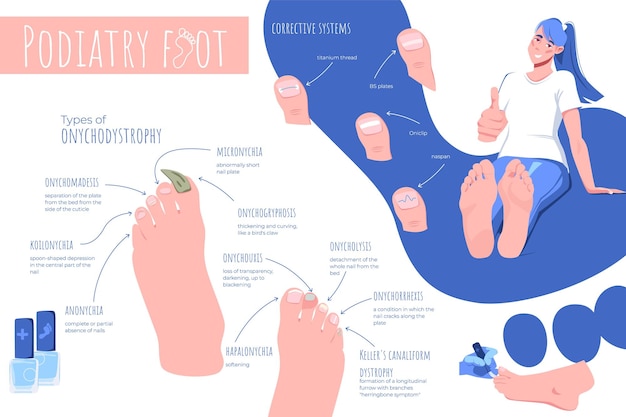
The heel is the largest bone in the foot, supporting the entire body when standing, walking, or running. Excessive stress or repetitive use can cause minor heel pain that may worsen over time. According to the American Podiatric Medical Association (APMA), various types of heel pain can often be effectively treated by podiatrists.
The heel, like other bones, is connected to 33 joints and around 100 tendons, ligaments, and muscles. Reasons for heel pain can vary, so it’s important to assess the individual’s background before determining the exact cause. Common causes include overuse, wearing poorly made footwear, and overstretching. Athletes, due to their rigorous physical schedules, are particularly vulnerable to heel injuries.
Heel pain typically appears either beneath the heel, behind it, or, in rare cases, on the side of the foot. The most common type of heel pain, occurring under the heel, is plantar fasciitis. If the pain is behind the heel, it could also extend to the inner or outer parts and is often referred to as Achilles tendinitis. Untreated heel pain can worsen over time and may even lead to more severe or disabling conditions.
While not every case of heel pain progresses to serious complications, some mild cases resolve on their own after rest. However, if the pain persists and home remedies don’t help, it’s important to visit a doctor or podiatrist.
### Signs and Symptoms of Heel Pain
Common symptoms include:
– Pain ranging from mild to severe in the heel.
– Pain under or behind the heel, or occasionally on its sides, depending on the condition.
– Tenderness spreading from the heel to the underside of the foot.
– Pain that worsens during normal activities like walking or running.
– Discomfort upon waking in the morning or after long periods of rest.
– Wearing improper footwear, especially high heels, can exacerbate the issue.
– Sometimes, the pain lessens with extended rest, while other times it persists despite relaxation.
### Common Causes of Heel Pain
Heel pain often results from abnormal walking patterns or improper biomechanics, placing undue stress on the heel bone and surrounding tissues. Physical activities like walking, jumping, or running can also contribute, especially when combined with ill-fitting footwear. Below are some specific causes:
– **Plantar Fasciitis**: This occurs when the plantar fascia (a connective tissue band along the foot’s sole) becomes inflamed or torn. This condition often leads to intense heel pain and stiffness, especially in the morning.
– **Achilles Tendinitis**: This chronic inflammation or injury affects the tendon linking the calf muscles to the heel bones. It is common in individuals with tight tendons or those who overuse their heels, often resulting in pain, swelling, and even bone spur development.
– **Heel Spurs**: These are bony growths under the heel bone caused by inflammation in the connective tissues. Heel spurs, linked to plantar fasciitis, can result in stiffness and discomfort.
– **Over-Pronation**: This occurs when foot arches flatten too much during walking, overstressing the tendons and ligaments in the heel.
– **Heel Bursa Inflammation**: Inflammation of the heel’s bursa (a fluid-filled sac) can develop because of poor posture or wearing unsupportive shoes.
– **Heel Bumps**: Often seen in teenagers with immature heel bones, heel bumps result from excessive rubbing or pressure, particularly from wearing high heels.
– **Repetitive Stress**: Continuous stress on the heel can lead to soreness. Overweight individuals and those wearing low-heeled shoes are especially at risk.
– **Strains and Sprains**: Injuries can lead to varying degrees of pain in and around the heel.
– **Fractures**: Severe injuries causing broken bones also necessitate immediate medical treatment.
– **Reactive Arthritis**: Infection-triggered inflammation can lead to chronic heel pain.
– **Heel Pad Inflammation**: Thinning of the heel pad or frequent heavy steps can cause inflammation and discomfort.
– **Osteochondroses**: This condition in children and adolescents disrupts bone growth and may lead to heel pain.
– **Ankylosing Spondylitis**: This type of arthritis affects the spine and can cause heel inflammation as well.
– **Microtrauma in Growth Plates**: Overuse can cause repetitive injury to the heel’s growth plates, particularly in active children and teenagers.
### Diagnosis and Treatment
Persistent heel pain lasting weeks should prompt medical evaluation. A doctor may perform a physical exam and order imaging tests, such as X-rays or MRIs, to pinpoint the root cause. Treatment will depend on the diagnosis and could include:
– **Cold Compress**: Applying ice packs can reduce swelling and pain.
– **Physical Therapy**: Exercises designed to improve mobility and reduce pain are often effective.
– **Manual Therapy**: Therapists may use hands-on methods to reduce stiffness, improve flexibility, and strengthen muscles.
– **Muscle Strengthening and Motion Exercises**: Strengthening and stretching exercises help ease strain and improve foot motion.
– **Braces or Splints**: Wearing braces for support or splints at night can reduce pain and provide stability.
– **Heel Cups and Wedges**: These help absorb shock and reduce pressure on the heel.
– **Special Footwear**: Switching to properly fitted shoes or specially designed footwear can prevent further pain.
– **Rest**: Limiting activities like running or walking on hard surfaces is crucial for recovery.
– **Anti-inflammatory Injections**: If other treatments fail, injections can provide temporary relief.
– **Surgery**: In extreme cases, procedures like removing growths or repairing soft tissues may be necessary.
### Prevention Tips
Taking proactive steps can significantly reduce the likelihood of heel pain:
– Wear appropriate footwear for activities, ensuring proper fit and support.
– Avoid high heels, especially during adolescence.
– Rest your feet when they feel overworked.
– Warm up before high-intensity activities to prevent sudden stress on the heels.
– Maintain a healthy body weight to reduce pressure on the heels.
– Be cautious when walking on uneven or hard surfaces.
While treatment can address existing heel pain, following these preventative measures can help maintain healthy heels and avoid future issues.